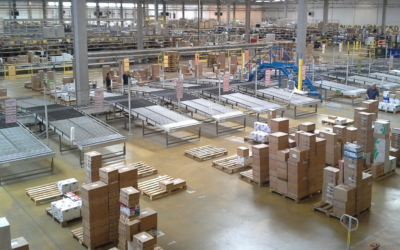Written by: Rick Braddy | Chief Technology Officer
Introduction:
In the life sciences sector, regulatory compliance is a critical aspect of business operations. Non-compliance can result in disciplinary actions, financial penalties, and potential litigation. The complexity of compliance requirements in different states and agencies makes it challenging for businesses to navigate. Fortunately, with the advent of digital technologies, businesses can streamline their compliance processes and avoid costly mistakes. This article will explore two technologies that are revolutionizing regulatory compliance processes in the life sciences sector: Cloud Computing and Artificial Intelligence (AI).
The Importance of Regulatory Compliance in the Life Sciences Sector
In the life sciences sector, regulatory compliance is crucial for businesses, and non-compliance can result in disciplinary actions, financial penalties, and potential litigation. The complexity of compliance requirements in different states and agencies makes it challenging for businesses to navigate. To address this, there is a growing demand for streamlined, multidimensional digital solutions.
Streamlining Compliance Processes with Cloud Computing
Cloud Computing has made software delivery more cost-effective and user-friendly, allowing businesses to pay only for what they use. This technology is particularly useful for businesses in the life sciences sector, as it allows them to access compliance-related software and data from anywhere, at any time. This, in turn, can significantly increase efficiency, save time and money for organizations, and help them avoid costly fines and non-quantifiable reputation damage resulting from non-compliance.
The Role of Artificial Intelligence in Regulatory Compliance
Artificial Intelligence (AI) has made significant progress in automating difficult tasks and creating models that can quickly and effectively solve problems. In the life sciences sector, AI can be used to automate regulatory compliance processes, making it easier for businesses to navigate complex compliance requirements. While Statistical and Generative AI can augment human computing power in compliance, only Deterministic AI can actively replace human computing power with the accuracy and reliability required for compliance.
How Deterministic AI is Revolutionizing Regulatory Compliance in the Life Sciences Sector
Deterministic AI is the only AI technology that is capable of actively replacing human computing power in compliance processes. This technology uses a set of predefined rules and processes to make decisions, ensuring accuracy and reliability. With Deterministic AI, businesses in the life sciences sector can automate compliance processes and minimize the risk of non-compliance.
The Emergence of RegTech Solutions
The RegTech market, which uses technology to help institutions comply with regulatory requirements, is expected to be worth USD 19.5 billion by 2026. RegTech solutions can significantly increase efficiency, save time and money for organizations, and help them avoid costly fines and non-quantifiable reputation damage resulting from non-compliance. In the life sciences sector, RegTech solutions are becoming increasingly popular, as businesses seek to streamline their compliance processes and reduce the risk of non-compliance.
How RegTech Solutions Help Us Moving Forward
Regulatory compliance is crucial for businesses in the life sciences sector, as non-compliance can result in disciplinary actions, financial penalties, and potential litigation. The complexity of compliance requirements in different states and agencies makes it challenging for businesses to navigate, but there is a growing demand for streamlined, multidimensional digital solutions.
Implementing RegTech solutions that leverage Deterministic AI helps life sciences companies navigate the complexities of regulatory compliance by automating compliance processes and reducing the risk of human error. These solutions can improve efficiency, save time and resources, and ultimately lead to protecting members of the supply chain and



